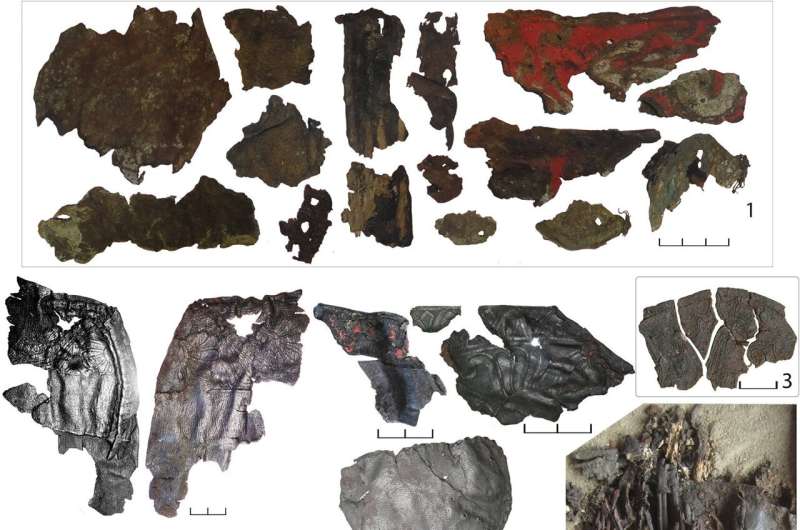December 19, 2023 report
This article has been reviewed according to Science X's editorial process and policies. Editors have highlighted the following attributes while ensuring the content's credibility:
fact-checked
peer-reviewed publication
trusted source
proofread
Analysis of ancient Scythian leather samples shows two were made from human skin

A multi-institutional team of anthropologists has discovered that two pieces of ancient Scythian leather excavated at sites in Ukraine were made from human skin. In their project, reported on the open-access site PLOS ONE, the group tested an account by the Greek historian Herodotus regarding certain behaviors of ancient Scythian warriors.
Prior research has found that an ancient group of people known as the Scythians lived in what is now the Pontic-Caspian steppe from approximately 700 BCE to 300 BCE. Because they were itinerant people, not much is known about them beyond their reputation as fierce warriors and excellent equestrians.
They were known to the ancient Greeks, though—famed historian Herodotus mentioned them in his writings. He said they were known to drink the blood of their slain enemies and sometimes used their scalps as a means for wiping the blood from their hands. He suggested that there had also been reports of them removing the skin from the right hand of an enemy and using it to make leather for their quivers. In this new effort, the research team looked for evidence of this last claim.
The researchers used a variety of paleoproteomics techniques to analyze 45 leather samples collected from 14 Scythian dig sites. They were able to identify the source of all of them—all but two were made from horse, cattle, goat or sheep skin. The other two had a human source, confirming what Herodotus had written.
Further study of the two human skin leather samples suggested that they were crafted onto just the top parts of quivers; the remainder of the quivers were made from animal leather.
The researchers suggest their findings not only confirm stories about the ancient Scythian warriors, but also that the warriors were creating their own quivers and were using material readily at hand.
More information: Luise Ørsted Brandt et al, Human and animal skin identified by palaeoproteomics in Scythian leather objects from Ukraine, PLOS ONE (2023). DOI: 10.1371/journal.pone.0294129
Journal information: PLoS ONE
© 2023 Science X Network



















